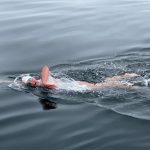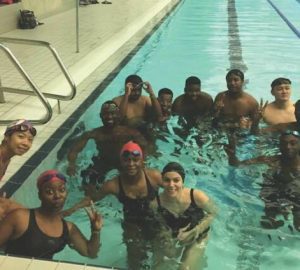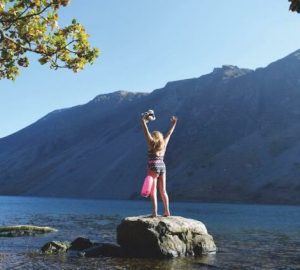A visit to Serpentine Swimming Club
A while ago, a committee member at Serpentine Swimming Club accused me of being “remiss”, if not “negligent”, in failing to pay a visit to one of England’s leading and most iconic swimming institutions. This weekend I amended that deficit, and thoroughly enjoyed myself, despite the incessant rain that foreigners insist is a permanent feature of London. However, according to the regulars, it hardly ever rains on a Saturday morning in Hyde Park and, apparently, I was just unlucky.
The Serpentine was created between 1730 and 1733 on the orders of Queen Caroline (wife of George II) as an ornamental lake to enhance the park’s beauty. By the 1830s it is known swimming races were regularly taking place and attracting large crowds, and no doubt people were taking advantage of the lake for bathing long before then. The Serpentine Swimming Club held its first Christmas Day race in 1864.
Today, the Serpentine Swimming Club holds a regular race every Saturday of the year, using a format that appears virtually unchanged for more than 100 years. After taking a dip, I was encouraged to join in the race.
The distance of the race varies throughout the year from as little as 40 yards in the winter to up to a mile when the lake is at its warmest. The distance last weekend was 440 yards (in accordance with tradition, imperial units are used to measure distances). No wetsuits are allowed and a handicap system is in place to give all swimmers a chance to win, regardless of speed. I was informed that it’s considered bad form for visitors or newcomers to win and was given a late start time. It mattered little anyway as I lost my goggles and by the time I found a spare pair I’d missed my start by more than a minute. Nevertheless I was hurried into the water and told to get on with it.
Most races I’ve done have a clear one-way system. No such thing exists in the Serpentine. The route has two out and back sections. A head-on collision in the ensuring chaos seemed like an almost certainty but it never happened and I made it safely back to the pontoon, somewhere towards the rear end of the field.
Due to the rain, the small, mixed changing room was packed but somehow all managed to dress without mishap, although there was talk of someone going home with the wrong trousers on a previous occasion. A mug of steaming tea was pressed into my hands and we went outside for prize giving.
The club awards a trophy to each week’s race winner, and the trophies are named after former members whose swimming and non-swimming exploits are recounted in a brief ceremony. The winners will then usually find their handicaps increase significantly after a victory to ensure they don’t win again too soon.
With its long history and traditions, the Serpentine Swimming Club may be a relic of a bygone era but could it also represent the future of open water swimming? While open water swimming is often associated with an older audience, I saw plenty of younger swimmers and teenagers, some of which were training for an English Channel relay. The handicap racing system allows everyone to take part, an annual membership fee of £20 and free swimming every day of the year thereafter means it’s affordable to almost anyone and your equipment needs are close to zero. It’s a model that some of the new open water swimming clubs appearing around the country (and around the world) could learn from.
Serpentine Swimming Club is 150 years old in 2014. Let’s hope it’s still here in 2164, alongside a host of other clubs that by then will have built up their own history and traditions. Given the growing popularity of open water swimming, and the over-crowding at the Serpentine, it appears these new clubs are much needed.






